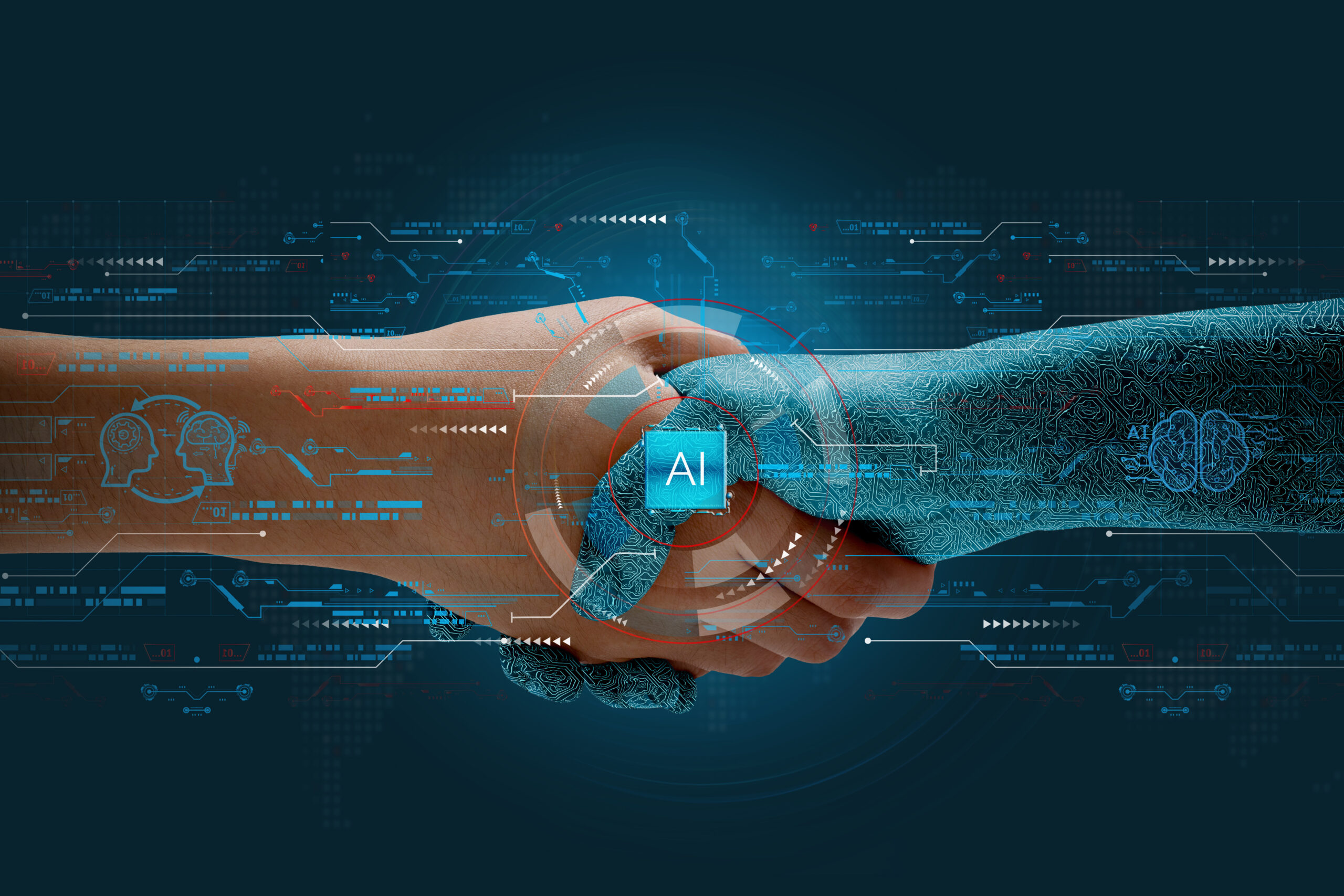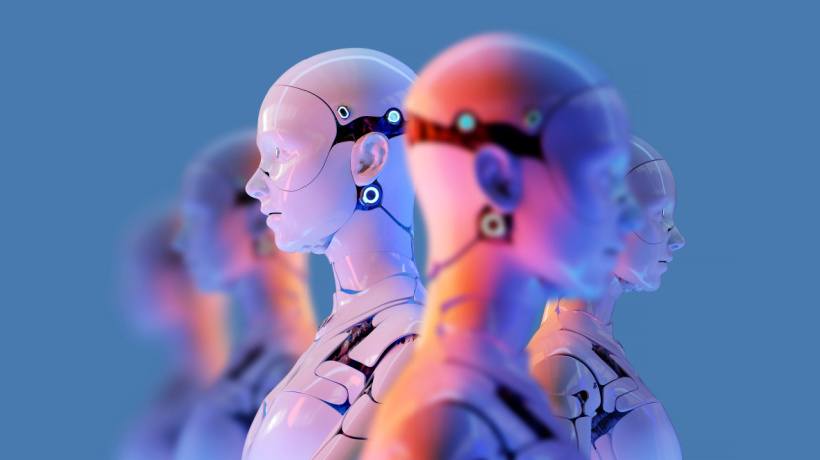Agent Architectures: Foundations in AI
Imagine a sophisticated digital assistant that can understand your requests, learn from past interactions, plan ahead, and take meaningful actions. This is the power of agent architectures—the fundamental blueprints that enable artificial intelligence to function autonomously in complex environments.
At its core, an agent architecture consists of four essential modules working in harmony, much like different parts of the human mind collaborating to process information and make decisions. Let’s explore each of these critical components.
The Profiling Module: Defining Agent Identity
The profiling module acts as the agent’s personality center, shaping how it interprets and responds to different situations. Just as humans have distinct personalities and roles, this module defines the agent’s characteristics, expertise, and behavioral patterns.
For example, in a customer service context, an agent might be profiled to be empathetic and solution-oriented, while in a technical environment, it could be configured to be more analytical and precise. This module ensures that the agent’s responses align with its intended purpose and role.
Through techniques like dataset alignment and handcrafted configurations, the profiling module can be fine-tuned to exhibit specific traits and expertise levels, making the agent more effective in its designated role.
The Memory Module: Learning from Experience
The memory module serves as the agent’s knowledge repository, enabling it to learn and adapt from past experiences. Like human memory, it consists of both short-term and long-term components, allowing the agent to maintain context in current interactions while building a lasting knowledge base.
For instance, when interacting with a user, an agent can recall previous conversations and preferences through its memory module, providing more personalized and contextually relevant responses. This capability is crucial for maintaining consistent and meaningful interactions over time.
The memory module can store information in various formats, from natural language descriptions to structured databases, ensuring efficient retrieval and utilization of past experiences.
The Planning Module: Strategic Decision Making
The planning module functions as the agent’s strategic center, breaking down complex tasks into manageable steps and determining the best course of action. This component enables agents to think ahead and develop effective strategies for achieving their goals.
Consider a home automation agent—its planning module would analyze factors like time of day, user preferences, and energy consumption patterns to optimize temperature settings and lighting conditions. This forward-thinking capability allows agents to make informed decisions that account for both immediate needs and long-term objectives.
The Action Module: Executing with Purpose
The action module translates the agent’s decisions into concrete operations, serving as the bridge between planning and real-world impact. This component ensures that the agent’s intentions are carried out effectively in its environment.
Whether it’s generating a response in a conversation, adjusting smart home settings, or analyzing data, the action module executes tasks based on the agent’s planning and memory while considering current environmental conditions.
By coordinating these four fundamental modules—profiling, memory, planning, and action—agent architectures create intelligent systems capable of understanding their environment, learning from experience, making informed decisions, and taking appropriate actions. This sophisticated interplay of components enables AI agents to operate autonomously and effectively in increasingly complex scenarios.
Understanding Agent-Environment Interactions
Reinforcement learning mirrors how humans learn through experience by interacting with our surroundings and learning from the consequences of our actions. Imagine a toddler learning to walk: they observe their environment, attempt to take steps, fall or succeed, and gradually adapt their approach based on these outcomes. This same pattern of interaction drives how artificial agents learn.
The continuous dialogue between agent and environment follows a clear rhythm: the agent first perceives the current state of its environment through its sensors or available information. For example, a robotic vacuum cleaner observes its location, battery level, and whether there is dirt nearby. Based on this state information, the agent decides on an action to take, such as moving forward to clean a dirty spot or returning to its charging station when the battery is low.
After executing an action, the environment responds by transitioning to a new state and providing feedback in the form of a reward signal. A cleaning robot might receive a positive reward for successfully removing dirt or a negative reward for bumping into furniture. This state-action-reward cycle creates a rich feedback loop that the agent uses to refine its decision-making process over time.
The agent’s goal is to develop an optimal decision-making policy, essentially a mapping from states to actions that maximizes its expected long-term rewards. Through repeated interactions, the agent learns which actions tend to yield better outcomes in different situations. For instance, our robotic vacuum gradually learns efficient cleaning patterns and how to navigate around obstacles while maintaining battery life.
This learning process is particularly powerful due to its ability to handle uncertainty and adapt to changes. The environment may be only partially observable or stochastic, meaning the same action might have different outcomes. The agent must therefore learn to make decisions with incomplete information while balancing exploration of new behaviors with exploitation of known successful strategies.
| Scenario | State | Action | Reward |
|---|---|---|---|
| Chess | Current board position | Move a piece | Positive for capturing a piece, negative for being put in check |
| Robotic Vacuum | Location, battery level, dirt presence | Move to a new location, clean, return to charging station | Positive for cleaning dirt, negative for bumping into furniture |
| Super Mario | Current game level | Jump, run, avoid obstacles | Positive for completing level, negative for losing a life |
This interactive learning process differs fundamentally from traditional supervised learning, where an agent learns from a fixed dataset of labeled examples. Instead, reinforcement learning agents actively engage with their environment, learning through trial and error much like biological organisms. This allows them to develop sophisticated behaviors that may not be easily programmed explicitly.
Overcoming Integration Challenges


Integrating autonomous agents into existing IT infrastructure presents complex technical hurdles. According to recent research, organizations face significant challenges merging new autonomous systems with legacy architectures, particularly around compatibility and system interoperability.
Legacy systems, often forming the backbone of enterprise operations, weren’t designed with modern autonomous agents in mind. This mismatch creates technical debt that must be addressed through strategic integration approaches. A key challenge lies in bridging the communication gap between older systems that may use outdated protocols and newer autonomous agents leveraging contemporary APIs and data formats.
Compatibility issues manifest in several ways. Legacy databases may store data in formats that autonomous agents struggle to parse and utilize effectively. Additionally, security protocols in legacy systems might not align with the dynamic access requirements of modern autonomous agents, creating potential vulnerabilities.
To overcome these hurdles, organizations should first conduct thorough assessments of their existing infrastructure. This involves mapping out critical systems, identifying potential points of failure, and documenting all integration dependencies. Such preparation helps prevent disruptions during the integration process while maintaining system stability.
An effective approach involves implementing middleware solutions that act as translators between legacy systems and autonomous agents. These intermediary layers handle protocol conversions, data transformations, and security reconciliation, enabling smooth communication between old and new components without requiring massive overhauls of existing infrastructure.
Best Practices for Seamless Integration
Success in integrating autonomous agents demands adherence to established best practices. Start with small, controlled pilot projects to validate integration approaches before larger implementations. This incremental strategy allows teams to identify and resolve issues early while minimizing risks to critical business operations.
Documentation plays a crucial role in successful integration efforts. Maintain detailed records of all integration points, data flows, and system dependencies. This documentation becomes invaluable for troubleshooting and future maintenance, especially when dealing with complex interactions between legacy systems and autonomous agents.
Regular testing and monitoring are essential components of any integration strategy. Implement comprehensive testing protocols that verify both the functionality of individual components and their interactions within the broader system. Continuous monitoring helps identify potential issues before they impact business operations.
Ensuring Long-term Success
Looking beyond initial integration, organizations must plan for long-term maintenance and scalability. Consider implementing version control systems that track changes to both legacy systems and autonomous agents, ensuring compatibility is maintained as components evolve over time.
Training and knowledge transfer represent critical success factors. Technical teams need to understand both the legacy systems and the new autonomous agents to effectively maintain and troubleshoot integrated systems. Invest in comprehensive training programs that bridge this knowledge gap.
Finally, establish clear governance frameworks that define roles, responsibilities, and procedures for managing integrated systems. This structure helps ensure consistent practices across the organization while providing clear escalation paths when issues arise.
Mitigating Biases in Training Data
Training data lies at the heart of every AI system, but hidden biases within this data can seriously impact how AI agents make decisions. Much like humans can develop unconscious biases based on limited experiences, AI systems can inherit prejudices from skewed or incomplete training datasets.
Three primary sources of bias emerge in AI training data. First, skewed sampling occurs when certain groups or scenarios are over- or under-represented in the dataset. Second, historical biases creep in when training data reflects past societal prejudices. Third, limited feature selection happens when crucial characteristics that could ensure fair representation are missing from the data.
Research has shown that biased training data can significantly affect an AI system’s performance, leading to discriminatory outcomes in critical areas like hiring, lending, and healthcare. For example, facial recognition systems trained primarily on certain demographic groups have demonstrated lower accuracy rates when attempting to identify individuals from underrepresented populations.
Practical Steps for Bias Mitigation
The good news is that we can take concrete steps to reduce these biases. Data diversity stands as the cornerstone of bias mitigation. This means intentionally collecting training data from varied sources that represent different demographics, perspectives, and scenarios. Think of it as ensuring your AI system gets a well-rounded education rather than a narrow viewpoint.
Regular dataset evaluation plays another crucial role. This involves analyzing your training data for potential biases before they manifest in the AI’s behavior. Statistical analysis can reveal hidden patterns of discrimination, while demographic audits help ensure balanced representation across different groups.
Data augmentation techniques offer another powerful tool for bias mitigation. By artificially creating variations in the existing data, we can help balance out representational disparities. This might involve generating synthetic data points or modifying existing ones to better reflect diverse scenarios.
Ensuring fairness and effectiveness in AI systems isn’t just about having more data – it’s about having the right data that represents the full spectrum of users and use cases.
Vasagi Kothandapani, Research Scientist at Meta AI
Collaboration between domain experts and data scientists has proven essential in identifying and addressing potential biases. These partnerships help ensure that bias mitigation strategies align with real-world contexts and ethical considerations rather than just technical metrics.
Implementing robust documentation practices for training datasets helps track their composition, limitations, and potential biases. This transparency enables teams to make informed decisions about data usage and necessary improvements over time.
Interdisciplinary Collaboration


Creating sophisticated autonomous AI agents demands more than just technical prowess – it requires a rich tapestry of expertise woven from multiple disciplines. When data scientists, domain experts, ethicists, and other specialists unite around a shared vision, AI development transcends its technical foundations to address complex real-world challenges comprehensively.
Cross-disciplinary teams bring unique strengths to AI projects. Computer scientists contribute deep algorithmic knowledge, while domain experts ensure solutions align with practical needs. Data analysts uncover insights from complex datasets, and ethicists help navigate moral implications. This diversity of perspectives leads to more robust and thoughtfully designed AI systems.
However, bridging disciplinary divides presents distinct challenges. As highlighted in a recent study, teams often struggle with communication barriers when technical and non-technical experts collaborate. Technical jargon can obscure meaning, while differing methodological approaches can create friction in project execution.
Tool accessibility poses another hurdle – many AI development platforms aren’t designed for collaborative use across disciplines. This can make it difficult for team members to effectively share insights and work together. Additionally, varying priorities between innovation-focused developers and risk-conscious analysts can lead to misaligned objectives.
Successful interdisciplinary collaboration requires intentional effort and structure. Regular knowledge-sharing sessions help build common understanding, while clear documentation of decision-making processes ensures transparency. Establishing shared goals early on and maintaining open dialogue throughout development helps teams stay aligned despite their diverse perspectives.
Cross-disciplinary collaboration in AI projects can lead to significant benefits, including diverse perspectives fostering innovative solutions that may not emerge within a single discipline.
Benefits Of Cross-Disciplinary AI Projects, Restack.io
Organizations that effectively bridge these disciplinary gaps often see accelerated development cycles and more impactful solutions. When experts from different fields collaborate seamlessly, they can identify potential issues earlier, develop more comprehensive solutions, and ensure AI systems truly serve their intended purpose while adhering to ethical principles.
| Challenge | Description | Solution |
|---|---|---|
| Communication Barriers | Differences in terminologies, methods, and cultures among interdisciplinary team members. | Regular knowledge-sharing sessions, establishing shared goals, and maintaining open dialogue. |
| Compatibility Issues | Legacy systems not designed for modern autonomous agents, leading to integration challenges. | Implementing middleware solutions to bridge communication gaps and conducting thorough infrastructure assessments. |
| Bias in Training Data | Skewed sampling, historical biases, and limited feature selection can lead to discriminatory outcomes. | Ensuring data diversity, regular dataset evaluation, and data augmentation techniques. |
| Tool Accessibility | AI development platforms not designed for collaborative use across disciplines. | Developing more intuitive collaborative tools and clear frameworks for cross-disciplinary communication. |
| Governance and Accountability | Lack of clear roles and procedures for managing integrated systems. | Establishing governance frameworks that define roles, responsibilities, and procedures. |
Looking ahead, the future of AI development lies in strengthening these collaborative bridges. This includes developing more intuitive collaborative tools, establishing clear frameworks for cross-disciplinary communication, and fostering a culture that values and actively seeks diverse perspectives in the pursuit of better AI solutions.
Continuous Monitoring for Improvement


For AI agents to maintain peak performance and deliver consistent value, organizations must implement robust monitoring systems and feedback loops. Based on research from leading medical institutions and AI governance frameworks, continuous monitoring serves as the foundation for identifying potential issues before they impact operations.
A key aspect of effective monitoring involves tracking multiple performance metrics simultaneously. As documented in NPJ Digital Medicine, successful monitoring requires analyzing both input data distributions and the relationships between inputs and outputs. This multilayered approach helps detect subtle degradations in model performance that might otherwise go unnoticed.
Real-time feedback mechanisms play an equally critical role in maintaining AI agent effectiveness. When users can quickly report issues or unexpected behaviors, development teams can investigate and implement fixes faster. This iterative feedback loop between users and developers helps refine the AI system’s responses and decision-making capabilities over time.
| Metric | Description | Importance |
|---|---|---|
| Revenue Growth | Measures the increase in revenue over a specific period. | Indicates overall business growth and financial health. |
| Customer Satisfaction (CSAT) | Assesses how satisfied customers are with a company’s products or services. | Helps understand customer loyalty and areas needing improvement. |
| Employee Retention Rate | Tracks the percentage of employees who remain with the company over a period. | Reflects employee satisfaction and company culture. |
| Net Promoter Score (NPS) | Measures customer willingness to recommend a company’s products or services to others. | Indicates overall customer satisfaction and potential for growth through word-of-mouth. |
| Operating Cash Flow | Shows the cash generated by a company’s regular business operations. | Indicates the company’s ability to generate sufficient cash to maintain or grow operations. |
Beyond basic performance tracking, organizations should establish clear thresholds and triggers for when model retraining or adjustments are necessary. These predefined criteria remove ambiguity about when intervention is required and help maintain consistent service levels. For example, if accuracy drops below a certain percentage or if user feedback indicates emerging edge cases, it signals the need for model updates.
Regular model evaluation against benchmark datasets provides another vital feedback mechanism. By periodically testing AI agents against standardized data, organizations can verify that performance remains stable and identify any drift in model behavior. This practice helps catch potential issues early before they impact production systems.
The key to successful AI monitoring is having structured processes that combine quantitative metrics with qualitative user feedback while maintaining rigorous documentation of all changes and their impacts.
Adrian P. Brady, American College of Radiology
Teams should also track deployment-specific metrics like response times, error rates, and resource utilization. These operational indicators can reveal potential system constraints or bottlenecks that might affect the AI agent’s ability to function optimally in production environments. Addressing these technical limitations proactively helps ensure reliable service delivery.
Documentation plays a crucial support role in the monitoring process. Maintaining detailed records of model versions, training data, hyperparameters, and performance metrics creates accountability and enables root cause analysis when issues arise. This historical data also helps teams make more informed decisions about future improvements.
The most successful monitoring programs take a holistic view, considering not just technical metrics but also business outcomes and user satisfaction. This comprehensive perspective ensures that AI systems continue to deliver value while maintaining high standards of reliability and performance.
Utilizing SmythOS for Advanced Development
SmythOS revolutionizes autonomous agent development through its innovative visual workflow builder, transforming complex coding tasks into intuitive drag-and-drop actions. This groundbreaking approach enables both technical experts and domain specialists to create sophisticated AI agents without wrestling with intricate code structures.
At its core, SmythOS offers an extensive library of pre-built components that serve as building blocks for AI creation. Whether developers need natural language processing capabilities, data analysis tools, or external service integration, SmythOS provides ready-to-use components that accelerate the development process. As research shows, this comprehensive toolkit significantly reduces development time from weeks to minutes.
The platform’s enterprise-grade security features provide robust protection for sensitive data and operations. In an era where data breaches and AI safety concerns dominate headlines, SmythOS’s advanced security controls offer essential peace of mind for organizations deploying autonomous agents in production environments. The platform implements comprehensive security protocols while maintaining the flexibility needed for rapid development and deployment.
One of SmythOS’s standout features is its sophisticated built-in monitoring system that provides real-time insights into agent performance. Developers can track message exchange rates, resource utilization, and task completion metrics—critical data points for maintaining optimal system operation. This visibility ensures that autonomous agents remain efficient and effective in production environments.
SmythOS excels in scalability and resource management, handling these complex tasks automatically. This means development teams can focus on innovation and agent design rather than infrastructure concerns. The platform’s intelligent architecture ensures that agents maintain optimal performance even as system demands grow, providing the foundation for enterprise-scale autonomous operations.
SmythOS democratizes AI, putting the power of autonomous agents into the hands of businesses of all sizes. It breaks down barriers, speeds up development, and opens new frontiers of what’s possible with AI.
Alexander De Ridder, Co-Founder and CTO of SmythOS
The platform supports seamless integration with over 300,000 apps, APIs, and data sources, enabling developers to create sophisticated agents that can interact with virtually any external service. This remarkable flexibility allows organizations to incorporate autonomous agents into existing workflows without disrupting operations, making SmythOS an ideal choice for businesses seeking to enhance their technological capabilities while maintaining operational continuity.
Future Directions in Autonomous Agent Development
Autonomous agents are entering a transformative era. Recent advancements in cognitive architectures and machine learning have dramatically enhanced these agents’ ability to process complex information, reason about intricate scenarios, and adapt to changing environments with unprecedented sophistication. The integration of quantum computing capabilities promises to exponentially expand processing power, enabling agents to handle increasingly complex calculations and scenarios that were previously out of reach.
Multi-agent collaboration represents another exciting frontier, as systems become capable of coordinating sophisticated tasks across distributed networks. These collaborative frameworks allow agents to share knowledge, distribute workloads, and collectively solve problems that would overwhelm single-agent approaches. As Gartner predicts, by 2028, at least 15% of day-to-day work decisions will be made autonomously through agentic AI, highlighting the growing importance of these systems in our daily operations.
The convergence of blockchain technology with autonomous agents introduces new possibilities for transparency and trust. By providing immutable records of agent interactions and decisions, blockchain integration enhances both reliability and accountability, particularly crucial as agents take on more critical roles in healthcare, finance, and autonomous vehicles.
As these technologies mature, SmythOS emerges as a pioneering platform that democratizes autonomous agent development. Its comprehensive toolset, including visual workflow builders and extensive API integration capabilities, enables organizations to create and deploy sophisticated autonomous systems without the traditional barriers of complex coding or infrastructure management.
The path ahead for autonomous agents is clear – they will become more intelligent, more collaborative, and more deeply integrated into our daily lives and business operations. The question isn’t whether organizations will adopt autonomous agents, but how quickly they’ll embrace this technology to maintain competitive advantage in an AI-driven future.
Last updated:
Disclaimer: The information presented in this article is for general informational purposes only and is provided as is. While we strive to keep the content up-to-date and accurate, we make no representations or warranties of any kind, express or implied, about the completeness, accuracy, reliability, suitability, or availability of the information contained in this article.
Any reliance you place on such information is strictly at your own risk. We reserve the right to make additions, deletions, or modifications to the contents of this article at any time without prior notice.
In no event will we be liable for any loss or damage including without limitation, indirect or consequential loss or damage, or any loss or damage whatsoever arising from loss of data, profits, or any other loss not specified herein arising out of, or in connection with, the use of this article.
Despite our best efforts, this article may contain oversights, errors, or omissions. If you notice any inaccuracies or have concerns about the content, please report them through our content feedback form. Your input helps us maintain the quality and reliability of our information.
